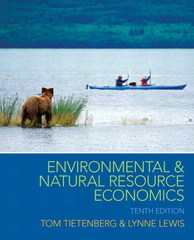Question
1.Which period of participating children's lives did the Harlem Children's Zone project focus on? a. Early Childhood b. Elementary School c. Middle School d. High
1.Which period of participating children's lives did the Harlem Children's Zone project focus on?
a. Early Childhood
b. Elementary School
c. Middle School
d. High School
e. All of the Above
2.Which of the following is FALSE about Intergenerational Mobility?
a. The research on intergenerational mobility that we covered in class uses Census data linked to tax records.
b. The disparities cannot be explained by differences in cognitive ability between groups
c. Areas with small amounts of upward intergenerational mobility are largely concentrated in the United States South.
d. When comparing by race and ethnicity for the whole sample, for a person whose parents' income is at the 25th percentile, the model predicts that the highest child income rank will occur for White children
e. Black Female Children and White Female Children have only minor differences in their rates of intergenerational mobility
3.Which of the following is TRUE about labor benefit laws?
Select one:
a. An employer can terminate working relationships with employees for any reason in the United States.
b. Canada offers 0 paid holidays and annual leave.
c. Establishments of 50 or more employees give up to 12 weeks of unpaid, job-protected maternity leave to eligible employees in the United States.
d. The United States requires firms offer 1 year of maternity leave.
4.In regard to market concentration,
a. More than half of all revenue is still earned in fragmented industries
b. All are correct
c. There has been an increase in the proportion of revenue earned within oligopolistic industries
d. There has been an increase in the proportion of revenue earned within concentrated industries
5.Which is NOT a proposed reason for the increase in market power in recent decades?
a. An increase in Mergers
b. An increase in new firms in the market
c. Economies of Scale
d.I ncrease in regulation to keep competitors out
6.Which of the following has NOT created significant barriers for African-Americans in the US?
a. The Civil Rights Movement
b. Exclusionary school zones and residential zoning regulations
c. Redlining and mortgage discrimination
d. The system of sharecropping
7.Which best describes redlining?
a. Redlining is when individuals cannot attend a certain school based off where they live
b. Redlining refers to school segregation on the basis of race
c. Redlining was the method used to determine who was eligible for the Harlem Children Zone
d. Redlining was a federally sponsored mapping system which made it very difficult for people in certain areas to access mortgage financing
8.What policy is LEAST effective to alleviate Spatial Mismatch?
a. Reduce international barriers to trade
b. Allow for public housing in high density and high job demand areas
c. Provide timely and adequate transportation between job centers and neighborhoods
d. Reduce lending barriers to allow low-income residents to move to a new house more easily
e. Provide more job opportunities in areas with low-income residents that best match their expertise
Step by Step Solution
There are 3 Steps involved in it
Step: 1

Get Instant Access to Expert-Tailored Solutions
See step-by-step solutions with expert insights and AI powered tools for academic success
Step: 2

Step: 3

Ace Your Homework with AI
Get the answers you need in no time with our AI-driven, step-by-step assistance
Get Started


